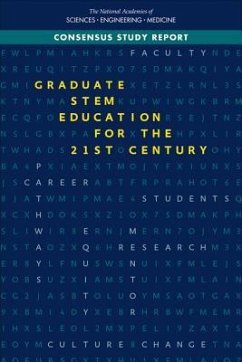The U.S. system of graduate education in science, technology, engineering, and mathematics (STEM) has served the nation and its science and engineering enterprise extremely well. In many ways, it is the "gold standard" for graduate STEM education in the world as evidenced by, among other measures, the substantial number of international students coming to the United States to study. Over the course of their education, graduate students become involved in advancing the frontiers of discovery, as well as in making significant contributions to the growth of the U.S. economy, its national security, and the health and well-being of its people. However, continuous, dramatic innovations in research methods and technologies, changes in the nature and availability of work, shifts in demographics, and expansions in the scope of occupations needing STEM expertise raise questions about how well the current STEM graduate education system is meeting the full array of 21st-century needs. Indeed, recent surveys of employers and graduates and studies of graduate education suggest that many graduate programs do not adequately prepare students to translate their knowledge into impact in multiple careers.
Hinweis: Dieser Artikel kann nur an eine deutsche Lieferadresse ausgeliefert werden.
Hinweis: Dieser Artikel kann nur an eine deutsche Lieferadresse ausgeliefert werden.








